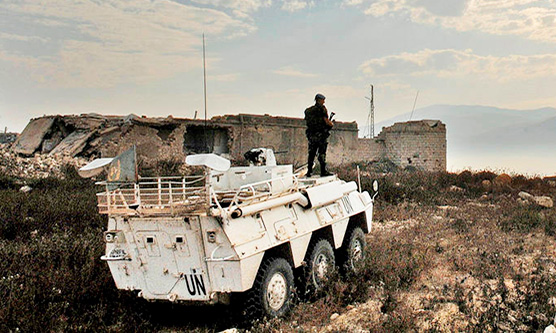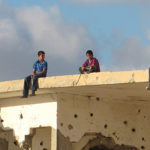Several governments and NGOs are engaged in domestic and foreign 'countering violent extremism' (CVE) programming in the security and justice fields. USAID and the Danish government have been particularly active in this area. CVE activities are often divided into: hard power approaches (military, legislative, policing, infrastructure protection, crisis planning, border ...» more
Conflict
Refugee, IDP and host community radicalisation
Socioeconomic conditions: In some circumstances, poor socioeconomic conditions (e.g. impoverishment, unemployment, lack of access to services and infrastructure, overcrowded living conditions) may make it more likely for refugees/IDPs to become radicalised. However, Lischer (2005) finds instead that there is generally little evidence to support the connection between particular ...» more
Contemporary conflict analysis of Iraq
This paper notes that conflict in Iraq has become increasingly sectarian, and has affected minorities the most. Among its findings it highlights roots of the violence: Sunni alienation following the ‘sectarianisation’ of the political system; feelings of insecurity as a result of sectarian militias and the increasingly Shia make-up of the Iraqi Security Forces; and structural ...» more
Sequencing reforms in fragile states
How can governments in fragile and conflict affected states (FCAS) plan and manage reforms when everything is urgent and important, and when capacity and resources are low? How can external actors strategically support the fulfilment of essential and expected state functions? This Topic Guide provides an overview of the evidence that examines the sequencing of statebuilding and ...» more
Faith-based organisations, conflict resolution and anti-corruption
This rapid report reviews the literature on faith-based development organisations (FBOs) and their role in conflict resolution and anti-corruption. In both areas the literature suggests that religious actors could play a decisive role, but that this has not been realised. The evidence on FBOs and conflict resolution is moderately robust. Nearly all literature provides case ...» more
Strategic communications and foreign fighters
Key Findings: There is limited coverage of strategic communications programmes specifically aiming to prevent the recruitment of citizens who travel to conflict zones to become foreign fighters. There is relatively more coverage of strategic communications with respect to broader counter-radicalisation or countering violent extremism (CVE) approaches, but there are few case ...» more
Counter- and de-radicalisation with returning foreign fighters
Key Findings: The documentation on counter- and de-radicalisation programmes for returning foreign fighters in conflict-affected and nearby states is limited. There is evidence of programmes that aim to de-radicalise, disengage and rehabilitate detained extremists in prisons, which in some cases target foreign fighters. A number of these programmes in the Middle East and ...» more
Conflict sensitivity in education, the private sector and infrastructure development
Conflict sensitivity in education: There has been increasing awareness that education systems are not neutral. Education can exacerbate conflict if it increases social tensions or divisions between groups. This may be the case if: education policies and practice are inequitable; education systems reinforce identity grievances; or educational curricula promote militarism.It is ...» more
Non-political drivers of violence
A growing body of literature looks at non-political drivers of violence. These, often inter-related factors, include: Climate change and environmental degradation: There is limited evidence to suggest that there is a causal link between climate change and environmental degradation and violence. However, climate change can exacerbate existing fragile situations leading to ...» more
Lessons from confidence building measures
When designing CBMs, lessons include: Link CBMs to wider peace- and state-building processes or negotiations; locally design CBMs according to local context; use CBMs in situations where trust is low; start CBMs in non-controversial, or symbolic, issue areas; design CBMs with long-term, incremental approaches; combine several CBMs at different track levels, and in different ...» more
Dealing with election-related violence in fragile and conflict-affected states
There are a number of causes of election-related violence, which can occur at different stages of the electoral cycle. Dealing with this violence very much depends on understanding these causes and tailoring measures to address them. This report draws on guidance material, evaluation literature and empirical studies to provide a brief overview of measures to prevent and address ...» more
The role of security organisations in security sector reform
There is consensus that donor approaches to SSR have failed to achieve the ambitious goals and objectives espoused in policy documents. Debates in recent literature centre on the reasons for this ‘policy-practice gap’ (Sedra, 2010; Bakrania, 2014b). Key themes include: There is agreement in the literature that donor assistance has generally taken an apolitical and technical ...» more
Conflict
Conflict is inherent in all societies and arises when two or more groups believe their interests are incompatible. ‘Conflict’ is not, however, interchangeable with ‘violence’. Non-violent resolution is possible when individuals and groups have trust in their governing structures, society and institutions to manage incompatible interests. Conflict becomes a problem when this ...» more
Methods for monitoring and mapping online hate speech
Approaches to mapping hate speech online can be classified into three principal groups based on their purpose: Real-time monitoring and mapping: These projects, the best known of which is the Umati project in Kenya, aim to provide continuous monitoring of online media. Such projects are rare, but they have the potential to serve as early warning systems or enable a reaction ...» more
Statebuilding and peacebuilding
Statebuilding and peacebuilding, while conceptually distinct, are becoming more closely integrated in academic and policy circles. This Topic Guide looks at the links (and tensions) between statebuilding and peacebuilding, how these activities interact, and how they can be approached in practice. A related Guide looks at State-Society Relations and Citizenship in Situations of ...» more
The impact of conflict on poverty
There is consensus in the literature that conflict impacts on poverty, but evidence on how this impact occurs is often limited, unsystematic, and sometimes contradictory. Much of the literature also discusses how poverty can contribute to conflict and the possibility of cycles of poverty and conflict as a result. Overall the latest evidence suggests that violent conflict ...» more
Urbanisation and conflict in Pakistan
There is a broad body of literature on violence in Pakistan, however less specific material drawing links between urbanisation and incidences of violence. Some of the main links between urbanisation and violence identified in the available literature include: Competition for resources, particularly land, water and housing. Weak infrastructure. Demographic change, ethnic ...» more
Costs of peace processes
The rapid review indicated that there is limited literature available on this topic. The information uncovered by this rapid review focuses mainly on the latter stages of a peace process and the core components of supporting the success of the peace process. These include, for example, disarmament, demobilisation and reintegration (DDR) processes, dialogue forums, transitional ...» more
Key actors, dynamics and issues of Libyan political economy
The scene of actors in Libya is highly fragmented, localised and fluid. The main division seems to have been between forces that support continued changes (‘pro-revolution’) and others that do not (‘anti-revolution’). Community actors: - Geographic communities. Beyond differences between Cyrenaica, Tripolitana and Fezzan, local communities have been the fundamental actors. ...» more
Gender in fragile and conflict-affected situations
This rapid literature review, in annotated bibliography format, collates a large amount of literature published in 2013 and 2014 (up to April 2014) on the topic of gender in fragile and conflict-affected situations. It is not a systematic or exhaustive review, but does provide a comprehensive overview of the literature available. It includes all types of available written ...» more





